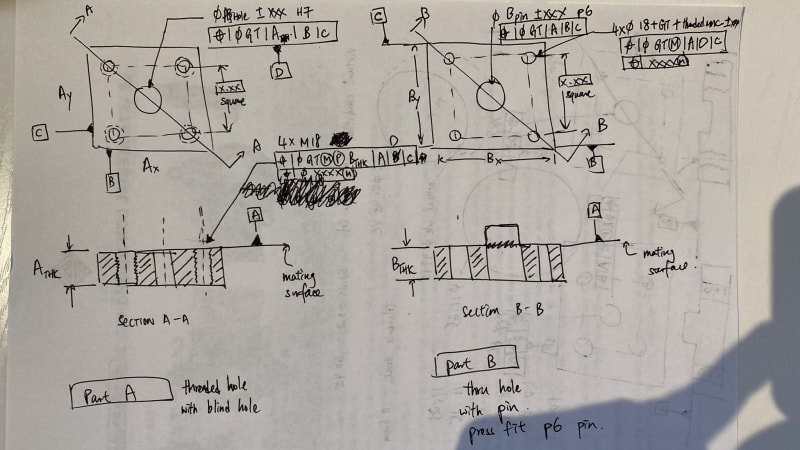hello, it is my first thread so be gentle. I believe my design example is simple to understand. Part A is a flat plate and 4 threaded holes with a square bolt pattern that is centered over a internal dia boss. the mating part, Part B, consists of 4 clearance holes (same hole pattern) and an external boss that the clearance holes are centered over. the idea is that Part B external boss must press (interference fit) into Part A's internal boss and the clearance holes must allow the fastener to pass thru into Part A's threaded holes.
what I would like to do is allow both the internal boss and 4 threaded holes on Part A to "float" around a good bit but control their relationship to one another more tightly.
I realize how to do this with a composite tolerance for the 4 threaded holes, but I am not sure how to "include" the internal boss in that composite tolerance as well. Again, I want their relationship pattern to be tightly controlled but their overall location to have more freedom.
Any help is appreciated. Thanks!
what I would like to do is allow both the internal boss and 4 threaded holes on Part A to "float" around a good bit but control their relationship to one another more tightly.
I realize how to do this with a composite tolerance for the 4 threaded holes, but I am not sure how to "include" the internal boss in that composite tolerance as well. Again, I want their relationship pattern to be tightly controlled but their overall location to have more freedom.
Any help is appreciated. Thanks!

